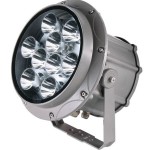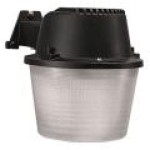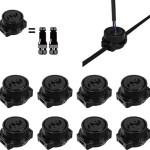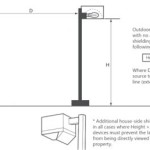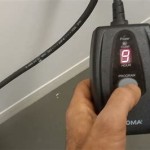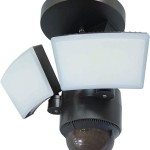Replacing an Outdoor Light Switch: A Comprehensive Guide
Outdoor light switches are essential components of home lighting systems, providing convenient control over exterior illumination. However, exposure to the elements can lead to corrosion, malfunction, and eventual failure. Replacing a faulty outdoor light switch is a relatively straightforward task that can be accomplished with basic electrical knowledge and the proper tools. This article provides a comprehensive guide to safely and effectively replacing an outdoor light switch.
Before beginning any electrical work, it is paramount to prioritize safety. Electricity poses a significant risk of injury or even death if handled improperly. Therefore, it is crucial to adhere to the following safety protocols:
1.De-energize the Circuit:
The first and most critical step is to completely disconnect power to the circuit controlling the light switch. Locate the corresponding circuit breaker in the electrical panel and switch it to the "OFF" position. To ensure the circuit is truly de-energized, it is recommended to use a non-contact voltage tester to verify that no voltage is present at the switch location. 2.Confirm De-energization:
After turning off the breaker, use a non-contact voltage tester to confirm that power is off at the light switch. Touch the tester to the wires and the switch terminals. If the tester does not light up or beep, it's safe to proceed. 3.Proper Tools and Equipment:
Gather the necessary tools and equipment, including a screwdriver (both Phillips head and flathead), wire strippers, wire connectors (wire nuts), electrical tape, a non-contact voltage tester, and safety glasses. Using the correct tools ensures a clean and safe replacement process. 4.Work in Dry Conditions:
Never attempt to replace an outdoor light switch in wet conditions. Water is an excellent conductor of electricity, and working in the rain or after a recent rain increases the risk of electrical shock. Wait for dry weather before proceeding. 5.Wear Safety Glasses:
Protecting the eyes from flying debris or accidental sparks is essential. Always wear safety glasses when working with electrical wiring.Identifying the Faulty Switch
Before replacing the switch, confirm that the switch itself is the source of the problem. Common signs of a faulty outdoor light switch include:
*Intermittent Operation:
The light turns on and off sporadically, even when the switch is in a fixed position. *No Operation:
The light does not turn on at all, regardless of the switch position. *Physical Damage:
The switch is cracked, broken, or shows signs of burning or melting. *Loose Connections:
The switch feels loose or wobbly when manipulated.However, other potential causes of lighting problems should be ruled out before concluding that the switch is faulty. These include:
*Burnt-out Bulb:
Always check the light bulb first to ensure it is not the source of the problem. Replace the bulb with a new one to see if the light functions correctly. *Faulty Wiring:
Loose or corroded wiring connections in the light fixture or at the switch location can also cause lighting problems. Inspect the wiring carefully for any signs of damage. *Tripped Circuit Breaker:
Verify that the circuit breaker controlling the light is not tripped. If it is, reset the breaker and see if the light functions correctly. If the breaker trips repeatedly, there may be a short circuit in the wiring.If these other potential causes have been eliminated, then it is likely that the switch is indeed faulty and needs to be replaced.
Removing the Old Switch
Once safety precautions are in place and the faulty switch is identified, the removal process can begin. This involves carefully disconnecting the existing wiring and unscrewing the old switch from its mounting.
1.Remove the Cover Plate:
Use a screwdriver to remove the screws securing the cover plate to the switch box. Carefully detach the cover plate. 2.Unscrew the Switch:
Use a screwdriver to remove the screws holding the switch to the electrical box. 3.Pull Out the Switch:
Gently pull the switch out of the electrical box. Be careful not to yank on the wires, as this could damage them. 4.Identify the Wires:
Before disconnecting any wires, carefully examine the wiring configuration. Typically, there will be a black wire (hot), a white wire (neutral, although this is less common in a standard switch circuit), and possibly a green or bare copper wire (ground). Note the positions of each wire and how they are connected to the switch. Taking a photograph of the wiring setup can be helpful for reference during reinstallation. 5.Disconnect the Wires:
Use a screwdriver to loosen the screws on the switch terminals and detach the wires. If the wires are connected using push-in terminals, use a small screwdriver or wire stripper to release the wires from the terminals. If the wires are connected with wire nuts make sure the power is off and use a wire stripper to expose more wire from the ends, so it can connect correctly to the new switch. 6.Inspect the Wires:
Examine the exposed ends of the wires for any signs of corrosion, damage, or fraying. If the wires are damaged, use wire strippers to cut off the damaged section and expose fresh wire.Installing the New Switch
With the old switch removed, the new switch can be installed. This involves connecting the wires to the new switch terminals and securing the switch to the electrical box.
1.Connect the Wires:
Connect the wires to the corresponding terminals on the new switch. The black wire (hot) should be connected to one of the brass-colored terminals on the switch. The white wire (neutral, if present) should be connected to the silver-colored terminal. The green or bare copper wire (ground) should be connected to the green grounding screw or terminal. Ensure that the wires are securely fastened to the terminals. Wrap electrical tape around the screws. 2.Wire Connectors:
If the wires are connected with wire nuts, ensure they are twisted tightly and securely to the wires. If the wire nuts look old or damaged, replace it immediately. Wrap electrical tape around the wire nuts. 3.Grounding:
A ground wire is typically required for safety. Make sure that the new switch and the electrical box are properly grounded. Connect the ground wire to the ground terminal on the new switch. 4.Position the Switch:
Carefully tuck the wires back into the electrical box and position the switch in the box. Ensure that the switch is oriented correctly, with the "ON" and "OFF" markings facing the correct direction. 5.Secure the Switch:
Use the screws to secure the switch to the electrical box. Do not overtighten the screws, as this could damage the switch or the electrical box. 6.Attach the Cover Plate:
Attach the cover plate to the switch, aligning the screw holes with the holes on the switch. Use the screws to secure the cover plate.Testing and Final Steps
After installing the new switch, it is essential to test its functionality and take the necessary steps to ensure proper operation.
1.Restore Power:
Return to the electrical panel and switch the circuit breaker back to the "ON" position. 2.Test the Switch:
Turn the switch on and off to verify that the light functions correctly. If the light does not turn on, double-check the wiring connections to ensure they are secure and properly connected. If the light still does not function, there may be a problem with the wiring or the light fixture itself. 3.Weatherproofing:
Ensure that the outdoor light switch is adequately weatherproofed. This may involve using a weatherproof cover plate or applying sealant around the edges of the cover plate to prevent water from entering the electrical box. For added protection, consider using a weatherproof switch. 4.Clean Up:
Clean up any debris or materials left over from the replacement process. Dispose of the old switch and any damaged wiring properly. 5.Label the Circuit:
Ensure that the circuit breaker in your electrical panel is properly labeled to indicate that it controls the outdoor light. This will make it easier to identify and de-energize the circuit in the future.By following these comprehensive steps, homeowners can safely and effectively replace an outdoor light switch, restoring functionality to their exterior lighting systems.

Adding An Extra Light From A Switch

The Best Outdoor Light Timer It S A Must Have Home Gadgets Diy Improvement Driven By Decor

How To Change A Light Switch In 6 Easy Steps

How To Replace A Light Switch Living By Homeserve

How To Replace A Light Switch Lighting Electrical Security B Q

Adding An Extra Light From A Switch

How To Install A Motion Sensor Light Four Generations One Roof

How To Wire A Light Switch Future House

How To Install A Dimmer Switch Lighting Diy

When To Replace Light Swithces Troubleshoot Switch
Related Posts
